CAMH talked recently with LAN Guiding Committee member Angelo Sinopoli, MD, from Greenville Health System (GHS), a LAN committed partner based in South Carolina. Dr. Sinopoli is the Vice President for Clinical Medical Integration and Chief Medical Officer at GHS; President of the GHS clinically integrated network, MyHealth First; and President of the Care Coordination Institute (CCI). A Greenville-based not-for-profit organization, CCI is dedicated to helping health care providers throughout the Southeast thrive in a population health management environment. Also participating in our conversation were John Supra, CCI Executive Director of Operations; Valinda Rutledge, CCI Vice President of Public Payor Health Strategy; and Jennifer Snow, Director of Accountable Communities for GHS.
Sinopoli: We are highly supportive of alternative payment models (APMs) and of transforming health care in our state and across the country. When we heard about the LAN’s formation, it was a natural fit for us. We want to be an active player in payment transformation, and the LAN provides an ideal platform to share our experience and deepen our involvement.
Supra: GHS has a rich history of developing PHM innovations, creating continuum of care models, and preparing for payment reform and APMs. In 2007, we set a course to pursue a total health care delivery model based on clinical integration as the means of providing for the overall well-being of our patients. This journey has been predicated on the belief that the country’s existing health care model is not sustainable and we should instead transition reimbursement to incentivize value-driven health care.
Nearly two years ago, GHS helped develop the clinically integrated MyHealth First Network. Today, MyHFN includes nearly 2,000 physicians and health care providers across 11 counties in upstate South Carolina. Network members share the goal of improving health outcomes, reducing health care costs, and enhancing the patient experience for 56,000 Medicare
beneficiaries. In December 2014, MyHFN was selected as one of the 2015 89 Medicare Shared Savings Program (MSSP) accountable care organizations (ACOs). The MSSP payment model fits into Category 3 of the APM Framework, including 3A, APMs with upside gainsharing, and 3B, APMs with upside gainsharing and downside risk.
The Care Coordination Institute (CCI), also developed under Dr. Sinopoli’s leadership, is a support-service, data-driven, and best practice knowledge institute. CCI develops and delivers PHM services that support health care providers and systems in significantly transforming health service delivery, management, and financing needed to improve and maintain the health of communities. It houses a clinical data repository of 2.9 million active patient lives, 1,900 clinical sites, and 10,000 providers, and produces over 13,000 provider scorecards each month. Our goal at CCI is to arm health care providers across the state with the tools and resources they need to deliver comprehensive, consistent, coordinated care. This includes providing risk-sharing management services and supporting shared savings initiatives for CMS, MSSP, and other commercial payors, pay-for-performance, and bundled payment.
Sinopoli: In our collective view, population health is at the core of successful APM models. We’ve realized many positive patient outcomes through these initiatives, as well as success with our at-risk contracts. It’s a long learning process, though, and requires a cultural change from within our organization, as well as specialized tools and expertise that most health systems don’t typically have in such areas as risk stratification, predictive modeling and analytics, financial analysis, care model design and analysis, and care management across the continuum. It has taken us many years to build a team that we think can effectively change things here in South Carolina; even with that team, considerable time and dedication are needed. We are fortunate to be part of an organization whose board and CEO have committed to change. They’ve been willing to take us through this transitional period of envisioning a return on investment, even when the infrastructure isn’t yet there to do so.
Rutledge: We’re learning that the core competencies you need to succeed in an ACO, patient-centered medical home, bundled payment, or other value-based purchasing arrangement are aligned. Throughout the industry, organizations often wonder which of these models they should be in. Our decision was to pursue not one but several different types of APMs because we see them as synergistic. Along with the MSSP ACO, MyHFN, we participate also in the Bundled Payments for Care Improvement initiative, a payment model that fits into Category 3 of the APM Framework. It includes episodes for total joint replacement of lower extremity, chronic obstructive pulmonary disease, congestive heart failure, and pneumonia. We have also applied to participate in the CMS Oncology Care Model and the Million Hearts initiative.
We’re involved not only with government payers, but also with commercial insurers. GHS works to build innovative partnerships with employers and health plans to improve quality and efficiency opportunities and to bring value to patients in new ways. We are also working with
health systems throughout South Carolina to develop a statewide network focused on advancing clinical integration activities between organizations and their affiliated clinically integrated networks to improve health care delivery and promote operational efficiency. All patients need coordinated care, but the type and level of intensity vary. We focus on providing the model that best suits the needs of the patient.
Snow: South Carolina has implemented a unique program called the Healthy Outcomes Plan. It’s a statewide alternative to Medicaid expansion and incentivizes systems across the state to work with community partners to better manage uninsured, chronically ill, high utilizers. We’ve launched several patient-centered initiatives, such as conducting motivational interviews, developing patient activation measures, sending resources to engage patients in their homes, and helping them get to their doctors’ appointments. The feedback we’ve received from patients is that they now understand how to better access and navigate a complicated health care delivery system.
Sinopoli: As mentioned, about 2,000 clinicians are highly engaged in our clinically integrated network throughout the upstate. They participate in local steering committees, receiving input as decisions are made at the board level so they can in turn implement initiatives in their local markets. They are believers that APMs are the direction of the future. That said, there is always anxiety around the transition. How do we get from where we’ve been to where we need to be, as quickly as we can? Providing support in these times of change has been a challenge, particularly in developing the data gathering and reporting protocols physicians need to really change behaviors. Today, there is no direct provider downside risk for the network. However, we continue to focus on implementing the tools and resources providers need to innovate in the way care is coordinated, with the goal of delivering quality, patient-centered care even as the health care environment continues to change.
Sinopoli: We envision a consolidated, clinically integrated network across our state with a single care model, a single data warehouse, single metrics for success, and unified processes that fully engage patients. We want to ultimately move to an accountable communities model. Today, we do a good job of risk-stratifying patient populations. Tomorrow, we want to risk-stratify communities and understand what they need to succeed in producing high-quality outcomes. If we can get delivery systems to cooperate with each other and align with payers, then we’ll be where we want to be.
Sinopoli: When we attended a LAN meeting in Washington, DC, we took with us several frontline practicing physicians. They came away from the meeting with a changed perspective. Efforts to further engage physicians and educate them on what’s going on nationally can help produce a best practice repository. More networking capabilities are also appreciated, particularly face-to-face sessions where various organizations can highlight what they’re doing well and what they need to do to improve. Stakeholders who are struggling with the same issues can help solve each other’s challenges.


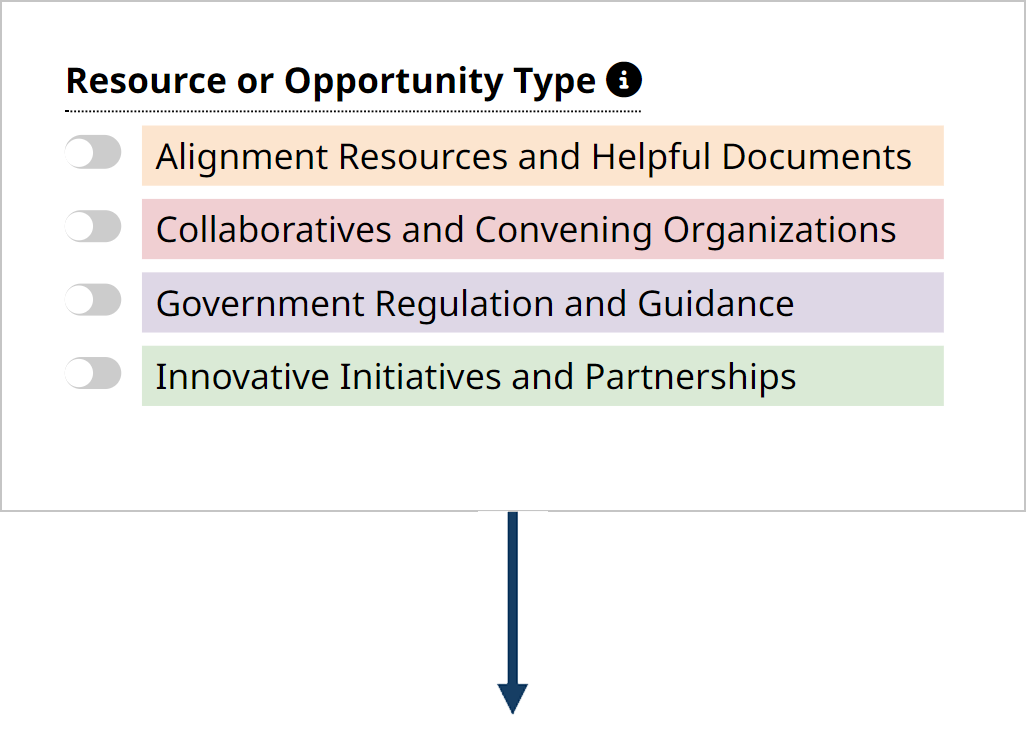
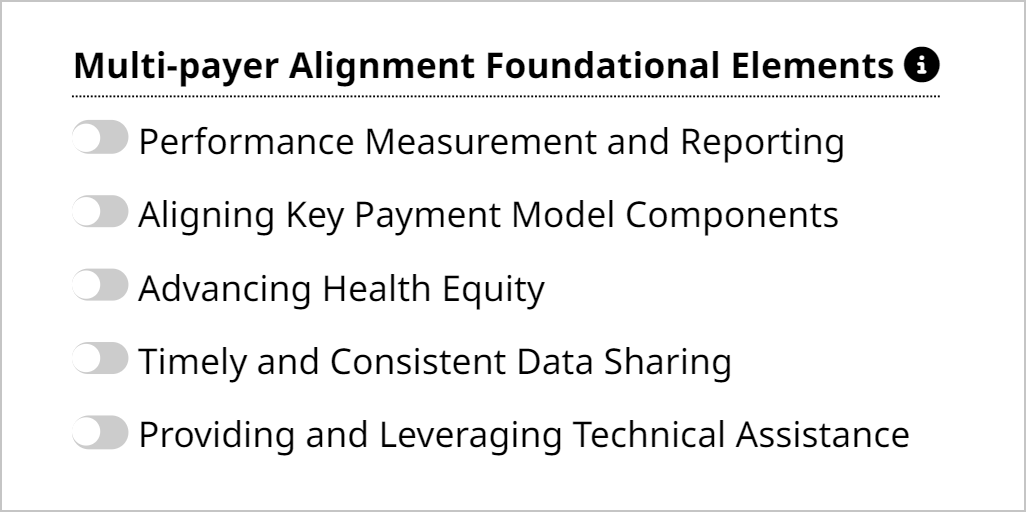





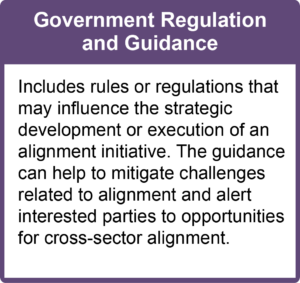



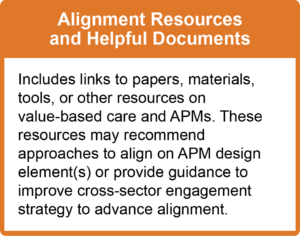
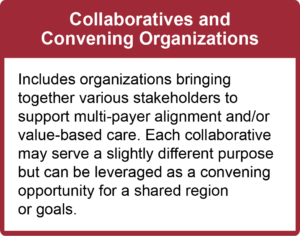
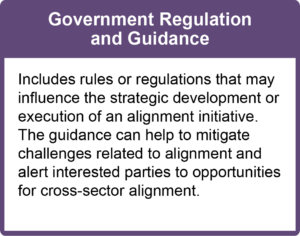






 Emily DuHamel Brower, M.B.A., is senior vice president of clinical integration and physician services for Trinity Health. Emphasizing clinical integration and payment model transformation, Ms. Brower provides strategic direction related to the evolving accountable healthcare environment with strong results. Her team is currently accountable for $10.4B of medical expense for 1.6M lives in Medicare Accountable Care Organizations (ACOs), Medicare Advantage, and Medicaid and Commercial Alternative Payment Models.
Emily DuHamel Brower, M.B.A., is senior vice president of clinical integration and physician services for Trinity Health. Emphasizing clinical integration and payment model transformation, Ms. Brower provides strategic direction related to the evolving accountable healthcare environment with strong results. Her team is currently accountable for $10.4B of medical expense for 1.6M lives in Medicare Accountable Care Organizations (ACOs), Medicare Advantage, and Medicaid and Commercial Alternative Payment Models. Mr. James Sinkoff is the Deputy Executive Officer and Chief Financial Officer for Sun River Health (formerly known as Hudson River HealthCare), and the Chief Executive Officer of Solutions 4 Community Health (S4CH); an MSO serving FQHCs and private physician practices.
Mr. James Sinkoff is the Deputy Executive Officer and Chief Financial Officer for Sun River Health (formerly known as Hudson River HealthCare), and the Chief Executive Officer of Solutions 4 Community Health (S4CH); an MSO serving FQHCs and private physician practices. Victor is the Chief Medical Officer for TennCare, Tennessee’s Medicaid Agency. At TennCare, Victor leads the medical office to ensure quality and effective delivery of medical, pharmacy, and dental services to its members. He also leads TennCare’s opioid epidemic strategy, social determinants of health, and practice transformation initiatives across the agency. Prior to joining TennCare, Victor worked at Evolent Health supporting value-based population health care delivery. In 2013, Victor served as a White House Fellow to the Secretary of Health and Human Services. Victor completed his Internal Medicine Residency at Emory University still practices clinically as an internist in the Veteran’s Affairs Health System.
Victor is the Chief Medical Officer for TennCare, Tennessee’s Medicaid Agency. At TennCare, Victor leads the medical office to ensure quality and effective delivery of medical, pharmacy, and dental services to its members. He also leads TennCare’s opioid epidemic strategy, social determinants of health, and practice transformation initiatives across the agency. Prior to joining TennCare, Victor worked at Evolent Health supporting value-based population health care delivery. In 2013, Victor served as a White House Fellow to the Secretary of Health and Human Services. Victor completed his Internal Medicine Residency at Emory University still practices clinically as an internist in the Veteran’s Affairs Health System. Dr. Brandon G. Wilson, DrPH, MHA (he, him, his) joined Community Catalyst as the Director of the Center for Consumer Engagement in Health Innovation, where he leads the Center in bringing the community’s experience to the forefront of health systems transformation and health reform efforts, in order to deliver better care, better value and better health for every community, particularly vulnerable and historically underserved populations. The Center works directly with community advocates around the country to increase the skills and power they have to establish an effective voice at all levels of the health care system. The Center collaborates with innovative health plans, hospitals and providers to incorporate communities and their lived experience into the design of systems of care. The Center also works with state and federal policymakers to spur change that makes the health system more responsive to communities. And it provides consulting services to health plans, provider groups and other health care organizations to help them create meaningful structures for engagement with their communities.
Dr. Brandon G. Wilson, DrPH, MHA (he, him, his) joined Community Catalyst as the Director of the Center for Consumer Engagement in Health Innovation, where he leads the Center in bringing the community’s experience to the forefront of health systems transformation and health reform efforts, in order to deliver better care, better value and better health for every community, particularly vulnerable and historically underserved populations. The Center works directly with community advocates around the country to increase the skills and power they have to establish an effective voice at all levels of the health care system. The Center collaborates with innovative health plans, hospitals and providers to incorporate communities and their lived experience into the design of systems of care. The Center also works with state and federal policymakers to spur change that makes the health system more responsive to communities. And it provides consulting services to health plans, provider groups and other health care organizations to help them create meaningful structures for engagement with their communities. Tamara Ward is the SVP of Insurance Business Operations at Oscar Health, where she leads the National Network Contracting Strategy and Market Expansion & Readiness. Prior to Oscar she served as VP of Managed Care & Network Operations at TriHealth in Southwest Ohio. With over 15 years of progressive health care experience, she has been instrumental driving collaborative payer provider strategies, improving insurance operations, and building high value networks through her various roles with UHC and other large provider health systems. Her breadth and depth of experience and interest-based approach has allowed her to have success solving some of the most complex issues our industry faces today. Tam is passionate about driving change for marginalized communities, developing Oscar’s Culturally Competent Care Program- reducing healthcare disparities and improving access for the underserved population. Tamara holds a B.A. from the University of Cincinnati’s and M.B.A from Miami University.
Tamara Ward is the SVP of Insurance Business Operations at Oscar Health, where she leads the National Network Contracting Strategy and Market Expansion & Readiness. Prior to Oscar she served as VP of Managed Care & Network Operations at TriHealth in Southwest Ohio. With over 15 years of progressive health care experience, she has been instrumental driving collaborative payer provider strategies, improving insurance operations, and building high value networks through her various roles with UHC and other large provider health systems. Her breadth and depth of experience and interest-based approach has allowed her to have success solving some of the most complex issues our industry faces today. Tam is passionate about driving change for marginalized communities, developing Oscar’s Culturally Competent Care Program- reducing healthcare disparities and improving access for the underserved population. Tamara holds a B.A. from the University of Cincinnati’s and M.B.A from Miami University.


 Dr. Peter Walsh joined the Colorado Department of Health Care Policy and Financing as the Chief Medical Officer on December 1, 2020. Prior to joining HCPF, Dr. Walsh served as a Hospital Field Representative/Surveyor at the Joint Commission, headquartered in Oakbrook Terrace, Illinois.
Dr. Peter Walsh joined the Colorado Department of Health Care Policy and Financing as the Chief Medical Officer on December 1, 2020. Prior to joining HCPF, Dr. Walsh served as a Hospital Field Representative/Surveyor at the Joint Commission, headquartered in Oakbrook Terrace, Illinois.








